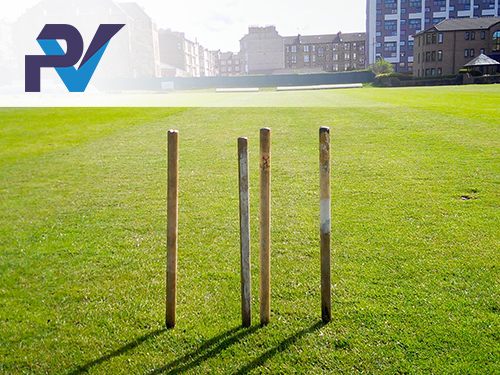The Role of a Modern Cricket Coach: Preparation
 This is the first in a series that details the job of a modern cricket coach from club and school to First-class level. This article covers "preparation". For the rest of the series, get the free PitchVision newsletter.
This is the first in a series that details the job of a modern cricket coach from club and school to First-class level. This article covers "preparation". For the rest of the series, get the free PitchVision newsletter.
What's the job of a cricket coach these days?
Turn Chaotic Nets into Performance Sessions with Just One Coach
How can one man coach a whole club?
This question is one that many a coach has been confronted with over the years. You've just been offered a senior coaching role at a new club. With visions of one-to-one discussions with batters, technical drills for bowlers, ongoing assessments and fitness development programs, your creative brain is firing.
Soon after, reality hits.
You’re coaching all four teams. They all train during the same two hour session once a week. Many will come and go at different times, and of course they all have a world of different issues they want to work on.
Oh, and you're on your own.
No assistant, no helpers, and no parents who you used to call upon when you were working with the juniors.
Don’t despair, there are still a few ways for you to make your sessions productive as long as you and your players can work to some simple guidelines.
Change Your Format: Change Your Learning and Experiences

In a recent game, Millfield School scored 258-4 against Eton School's 107-7. Sounds like a one-sided game of limited overs cricket doesn't it? But this was far from the truth. This was declaration cricket. This was drama right up to the last ball.
Both coaches met before the game to discuss the format for the day. The pitch was a used one from a game earlier in the week. It was a good pitch, very dry and with patches of rough developing at both ends. We decided that there was potential for a declaration format to be played where bowlers, particularly the spinners, could have extended spells with no restrictions on field placement.
I was hoping that we won the toss as our spinners may have the opportunity to bowl with men around the bat; something that the limited overs a game rarely provides.
The game was on.
Let's examine why it was so good.
Wicketkeeper Standing Back Drill: Relevant, Functional and Challenging

The challenge with any wicket-keeping drill is to make it relevant, functional and challenging.
Last week, we were doing a standing back drill using the Katchet board. I was throwing the ball onto the board as hard as I could to challenge the two keepers. The keepers are both County Age Group players and in one of the cases, an England International.
It soon became apparent that both were not being challenge sufficiently by the drill and that my shoulder was getting warmer and warmer. We needed to solve a problem.
That solution was the Sidearm. Since a recent Sam Lavery article on coaching kit, I have noticed more players have purchased Sidearms. It's great to see sessions where players are practising batting in pairs against the sidearm. It’s a brilliant piece of kit.
I decided to ease my shoulder by attempting to throw the ball onto the Katchet using a Sidearm. The results were awesome.
Here's my view,
How to Improve Cricket Decision Making
 Coach Sam Lavery moves beyond technical help and into helping you develop players who know how to make good decisions.
Coach Sam Lavery moves beyond technical help and into helping you develop players who know how to make good decisions.
It strikes me that our most important cricket asset is the ability to make decisions. While we focus on important areas like developing technique, getting fitter, bowling faster, and having more creativity at the crease; decisions underpin it all.
What Does Success Look Like?

One of the great coaching questions is "What does success look like?"
Millfield Under 15 managed to get themselves bowled out on Sunday for 75 against Gloucestershire CCC U15s. We had a shocker: 2 silly run outs, 2 players cutting balls on the stumps when the ball was keeping low and seemingly no clue of how to compile an innings on what was a early season slow and low pitch.
More Run Outs with This Fielding Drill Upgrade
 Iain Brunnschweiler has a simple drill upgrade for you to get more direct hits.
Iain Brunnschweiler has a simple drill upgrade for you to get more direct hits.
Matches can be turned when you complete run outs: Direct hits will result in a wicket.
So it is important that you get your throws as close as possible to the stumps as often as possible. The problem is, when doing a throwing at stumps drill, we often simply use a 'hit or miss' outcome to gauge the success of the throw. This can result in a lot more misses than hits, especially in younger players. It's disheartening.
The good news is there is a simple way of setting more of a gauge to help understand progress and guide development.
Which Action Is Best for Bowling Faster?
Front on?
Side on?
Mixed?
Halfway?
There are many different positions a bowler can get in when he or she hits the delivery stride. Which one works best for generating pace?
Coach Frustrations: Dealing with the "We Have Done This Hundreds of Times" Problem

I'm sure you have been there: Lots of work done in the cricket halls, nets and middles practices, yet we see the same old mistakes over and over again on the field from the players.
Improve Your Running Between the Wickets with Graham Gooch
When you bat, running between the wickets is one of the hardest cricket skills to develop. In this exclusive video for PitchVision Academy, Graham Gooch talks about the importance of working on awareness of when to run, and how to practice it in net situations.

